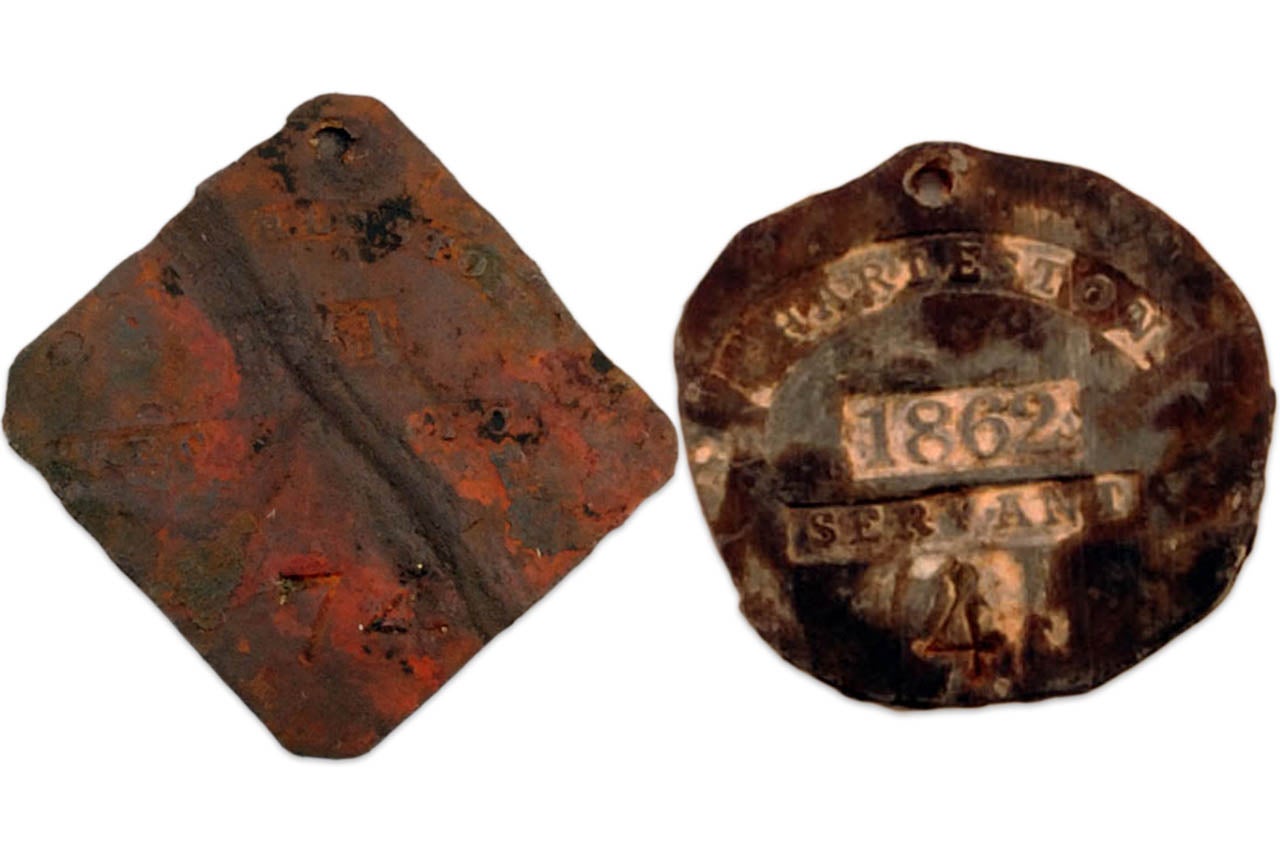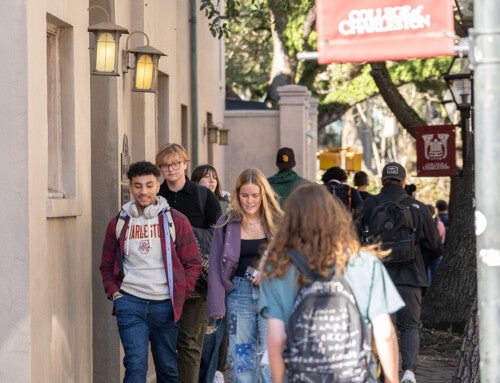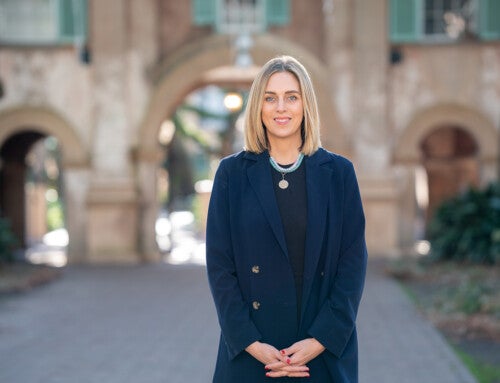On each Friday during Black History Month, The College Today will take a look back at the African-American students, faculty, community members and institutions that have made the College of Charleston the place it is in 2017. Today, we take a look back at freedman and slave badges used in slavery-era Charleston.
From 1783 to 1789, the City of Charleston mandated that “every free negro, mulatto, or mestizo above the age of fifteen years” obtain and wear a Freedman Badge to verify and demonstrate their “free” status. Charleston was the only city in America to create and enforce such a law, and only 500–600 badges were made. Even fewer are known to remain today.
And one of them is at the College of Charleston.
One of the only 10 known City of Charleston Freedman Badges in the world was gifted to the College’s Avery Research Center for African American History and Culture by sisters Blaine Wimberly and Anne Clark. As the thickest badge recorded to date, the gift is one of the finest examples known to survive – and it has the crispest edge around the words “City of Charleston” of any examples known.
It’s among a dozen badges from Charleston’s slaveholding past at the Avery Research Center, which has aimed to educate the community on the history and culture of African-Americans in Charleston, the Lowcountry, and South Carolina at large since its founding in 1985. The center currently holds 900 linear feet of archival holdings (manuscripts, photographs, microfilm, audiovisual, and digital), more than 6,000 printed volumes, and over 1,700 hundred artifacts (slavery memorabilia to material culture from West Africa and sweetgrass basket collections) materials that document the history, traditions, legacies, and influence of African-Americans and their place in the American narrative.
RELATED: Updated Exhibit Sheds New Light on Avery Center’s History
The copper free badge at Avery Research Center is not to be confused with the slave badges Charleston instituted to regulate its slave-hire system. Made between 1800 and 1865, slave badges, or slave tags, are also rare and valuable.
Slave badges were issued by the city (though there are examples of counterfeits from the era) and were stamped with the occupations of the enslaved people who wore them. Historian and College of Charleston Professor Bernard E. Powers, Jr. wrote in his book, Black Charlestonians: A Social History, 1822-1885, that in 1848 enslaved Blacks worked in at least 38 different occupations. Owners would use the badges to hire out their slaves and retained a majority of the earnings. The portion that the enslaved people were allowed to keep from their work was saved in hopes of buying their freedom, their family’s freedom, or own housing. It is important to note that each enslaved person had a different experience and that men often faced resistance from white workers.
“The Avery Research Center is glad to have these artifacts in our collections as they provide the opportunity to engage with our varied audiences, about the history of slavery in Charleston, the varied ways that enslaved people’s bodies were marked, and how the city’s geography was shaped as a result” says Aaisha Haykal, the manager of archival services at the Avery Research Center. “When we bring out or display these objects of oppression to our patrons they often express disbelief, but they are also interested in knowing more about the individuals and the work that they did to make Charleston the profitable and well-known city it is today and although we cannot definitely identify everyone we do know about the circumstances they lived under and how they navigated around the city.”
Charleston’s slave badges served as licenses permitting slaves to hire out their time for money. Although the earnings were shared with the slaves’ owners, the practice allowed slaves to make some money for themselves. Requiring annual renewal, the slave badges come in a variety of styles, depending on the craftsman, and are stamped with the year, the badge number and a work category (e.g., mechanic, servant, porter, etc.).
There are three copper slave badges (including mechanics’ badges from 1833 and 1851 and a servant’s badge from 1845) in the Avery Research Center’s Walter Pantovic Artifact Collection, which spans the African-American experience from slavery to contemporary popular culture. The collection is named for Walter Pantovic, a Yugoslavian immigrant with an interest in Black history and slavery and the Civil War in particular.
The number of badges made every year fluctuated according to the economy and the laws, and very few were passed down – giving the badges that are uncovered even more intrigue, importance and value.
“It’s a shame no records survive to help us discover who actually wore the badge,” says Harlan Greene, head of Special Collections at the College’s Marlene and Nathan Addlestone Library and co-author of Slave Badges and the Slave-Hire System in Charleston, South Carolina: 1783–1865. “Even so, it’s a tangible piece of history connecting us to a person who lived in the place we live today, but in an era incredibly different from our own. If it could talk, it would have an incredible tale to tell. Even in its silence it reflects an incredible story.”




